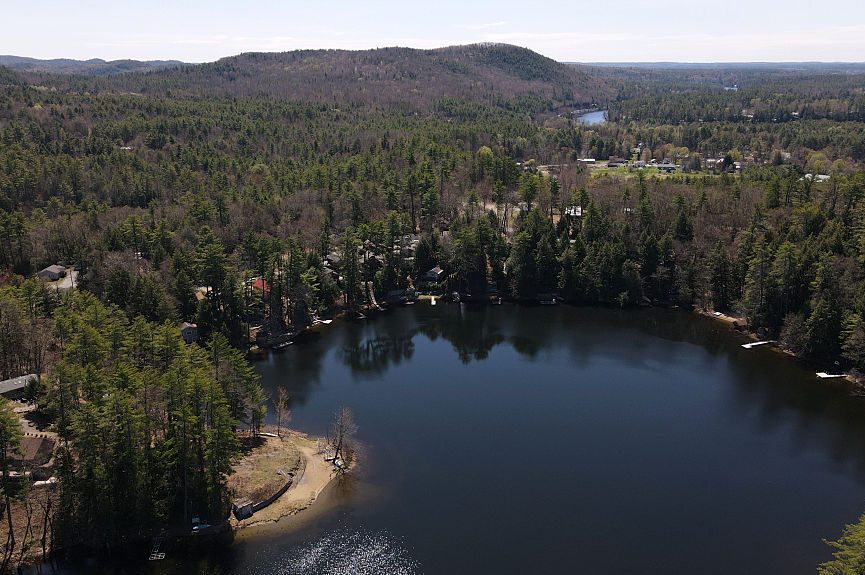The US Department of Agriculture rescinded the 2001 Roadless Rule last week, a regulation that restricted road building and timber extraction in about 30 percent of land managed by the National Forest System. Judging the pushback from environmentalists, you might think that President Trump was selling Yosemite to a logging company. But the red-tape cutting actually increases public recreation access and opens neglected forests to fire-mitigation projects. Conservationists should be celebrating.
On paper, the Roadless Rule preserved America’s most beautiful landscapes. In practice, the regulation proved burdensome and ecologically counterproductive. For instance, some 2,400 Tinglit Native Alaskans reside on islands in the Tongass National Forest. Because road building has been prohibited in the region, construction materials must be transported by helicopter. This multiplies the cost of building a geothermal or hydroelectric energy site by nearly a factor of four. Instead of tapping such renewable energy sources, these communities rely on high-emission diesel generators. They pay some of the highest energy prices in the state. Back when the Roadless Rule was in effect, the local energy company sued the USDA for constitutional overreach.
Environmentalists, though, fear that new roads and logging projects will destroy the wilderness recreation experience. This month’s repeal is a bit less devastating than they imagine. It does not affect National Parks or National Wilderness, but National Forest land, which has always been open to motorized vehicles and commercial resource extraction. While the NFS will be issuing more timber-harvesting permits under the USDA change, the land will remain in federal ownership. (The USDA’s Roadless Rule repeal is unrelated to Senator Mike Lee’s proposal this week to sell 1.2 million acres of federal land.) Timber contracts are temporary, limited in acreage, and carefully regulated. The surrounding land remain open to recreation, and once the contract has has been fulfilled, the parcel returns to public use. The timber harvesters leave behind a road, yes; but that is not necessarily a drawback for recreational purposes. Environmentalists should know from experience that many trailheads lie at the end of NFS access roads.
The repeal has faced opposition on ecological concerns. The Sierra Club, for instance, protested that the Roadless Rule repeal “means polluting our clean air and drinking water sources to pad the bottom lines of timber and mining companies – all while pursuing the same kind of mismanagement that increases wildfire severity.”
Quite the contrary. Both roads and timber extraction are crucial to fire mitigation, and thus to clean air and water. Roads help stop wildfires: they act as fire breaks and give wildland firefighters access to, and escape routes from, burn areas. And timber extraction helps prevent such severe wildfire conditions in the first place.
Without human intervention, frequent fires would clear undergrowth and might even remain mild enough to spare mature trees. For over a century, however, we have been committed to a policy of total fire suppression. Because we have quenched fires immediately, even in remote areas, forests have become littered with deadfall. When wildfires do break out, they burn at such a high temperature that they scorch the ground itself, killing seeds and thus impeding reforestation. To prevent such fires and ameliorate the conditions that make them catastrophic, our overgrown forests must be thinned. Such a massive initiative could be funded by tax dollars, or it could be done for free by logging companies who make their profit off of the lumber extracted. Timber harvesting may “pad the bottom line” of corporate interests; if executed responsibly, it can also be the single most effective form of fire mitigation.
Environmentalists rightly decry clear cutting, the method of timber harvesting which removes all of the trees and leaves a bare swath of ground. Devoid of the forest’s root systems, the soil is susceptible to erosion. Direct sunlight prevents some heat-sensitive saplings from regrowing, and it melts the snowpack too quickly. The sudden runoff floods rivers in springtime and leaves them dry in the summer, which is unfortunate for fish and fishermen and devastating to ranchers and farmers.
But clear cutting is not the only method of timber harvesting. Selective cutting, which removes individual trees and leaves others standing, can still be profitable for logging companies and is essential for forest management. Indeed, the NFS accomplishes much of its fire mitigation via stewardship contracting, in which logging contractors remove individual trees under ranger supervision in exchange for ownership of the lumber extracted. While the NFS still issues clear-cutting permits, selective logging is on the rise. On March 1, Trump signed an executive order to streamline lumber permitting; its clause deregulating timber thinning is a win for conservationists and conservatives alike.
In a recent selective-cutting project in central Colorado, for instance, the Upper Arkansas Water Conservancy District – a group consisting largely of (very Trump-supporting) ranchers and farmers – partnered with (very granola) environmentalists to manage a fire-prone region of San Isabel National Forest. Trees were removed in a vertical stripe pattern, which prevented erosion damage, and the logging company sold the timber to local lumber mills. Such timber harvesting is bipartisan, it is ecologically sustainable, and it is necessary for fire mitigation.
The controversy over federal-land use, however, is deeper than a debate on effective wildfire prevention or corporate interests. America is fundamentally divided over what our forests are for. Those who make their living on and by the land believe in stewarding it well, and that stewardship includes exploiting its resources for the betterment of society. Young, progressive city-dwellers hallow wilderness as a refuge from human greed; some of them would consider mining and logging to be a rape of the land. The old and wise might scorn this attitude for its NIMBYism, but it is also remarkable for its reverence. In a secular world, the wilderness is still sacred.


























Leave a Reply